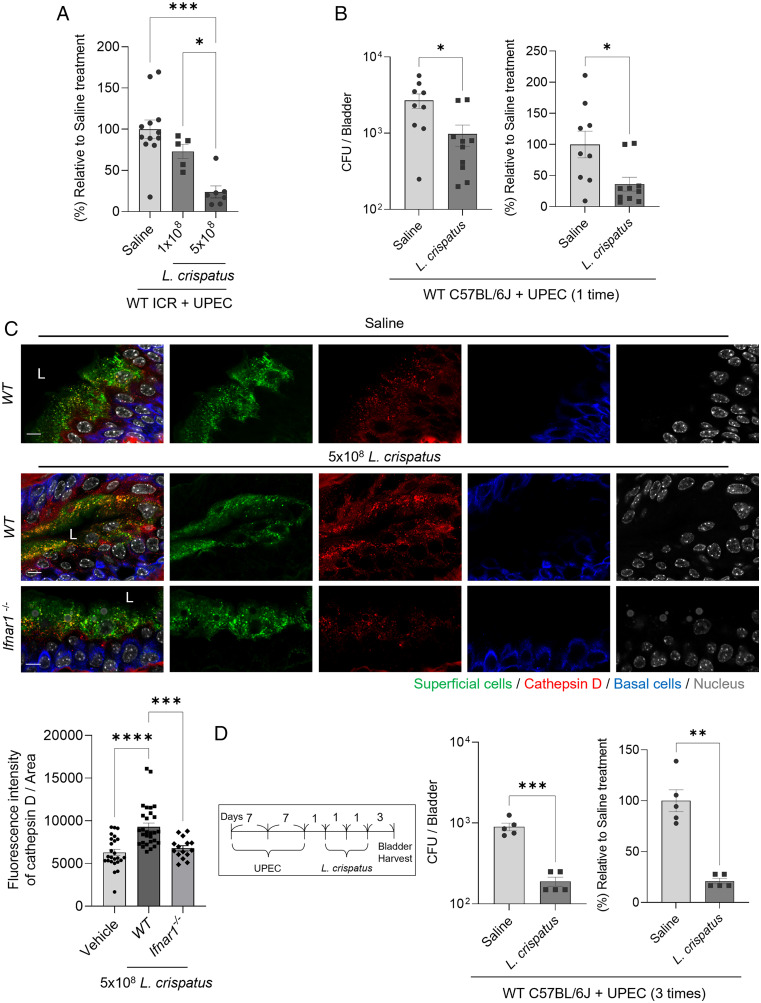Fig. 4.
Reduced bacterial burden in UPEC-infected bladders mediated by treatment with L. crispatus. (A) Intravesical infection of ICR female mice with UPEC CI5 strain (1 × 108 CFU). After 24 h, infected mice were intravesically inoculated with L. crispatus (1 × 108 or 5 × 108 CFU). The bladders fromeach group of mice were harvested after 24 h. (B) Intravesical infection of C57BL/6J mice with UPEC CI5 strain (1 × 108 CFU). After 24 h, infected mice were intravesically inoculated with L. crispatus (5 × 108 CFU). The bladders from each group of mice were harvested after 24 h. (C) Intravesical inoculation of L. crispatus (5 × 108 CFU) or saline into C57BL/6J mice or Ifnar1−/− mice. After 24 h, WGA (superficial epithelial cell), anti-cathepsin D, or anti-cytokeratin 5 (basal urothelial cell) antibodies were used to stain each bladder, and representative images were chosen. (D) The UPEC CI5 strain (1 × 108 CFU) was used to intravesically infect C57BL/6J mice three times over a period of 7 d. L. crispatus (5 × 108 CFU) was intravesically instilled three times after 24 h from the last infection. The bladders from each group of mice were harvested to assess the bacterial burden. Each data point represents one mouse. Error bars in each bar graph show mean ± SEM. Each experiment (A–D) was independently repeated two to three times with similar results. Data were analyzed by an ordinary one-way ANOVA (A and C) with Tukey’s multiple comparison posttest or unpaired two-tailed Student t test (B and D). *P < .05; **P < .01; ***P < .001; ****P < .0001.

